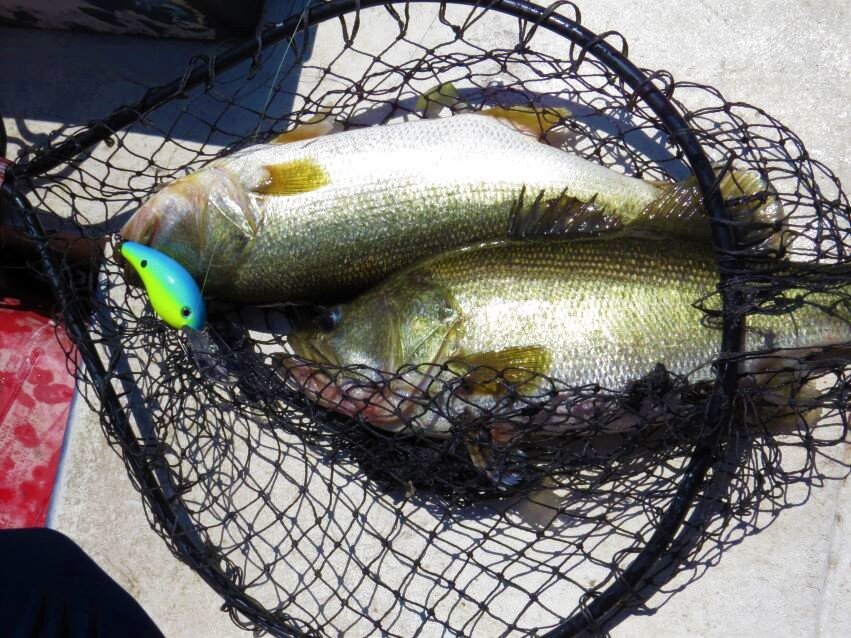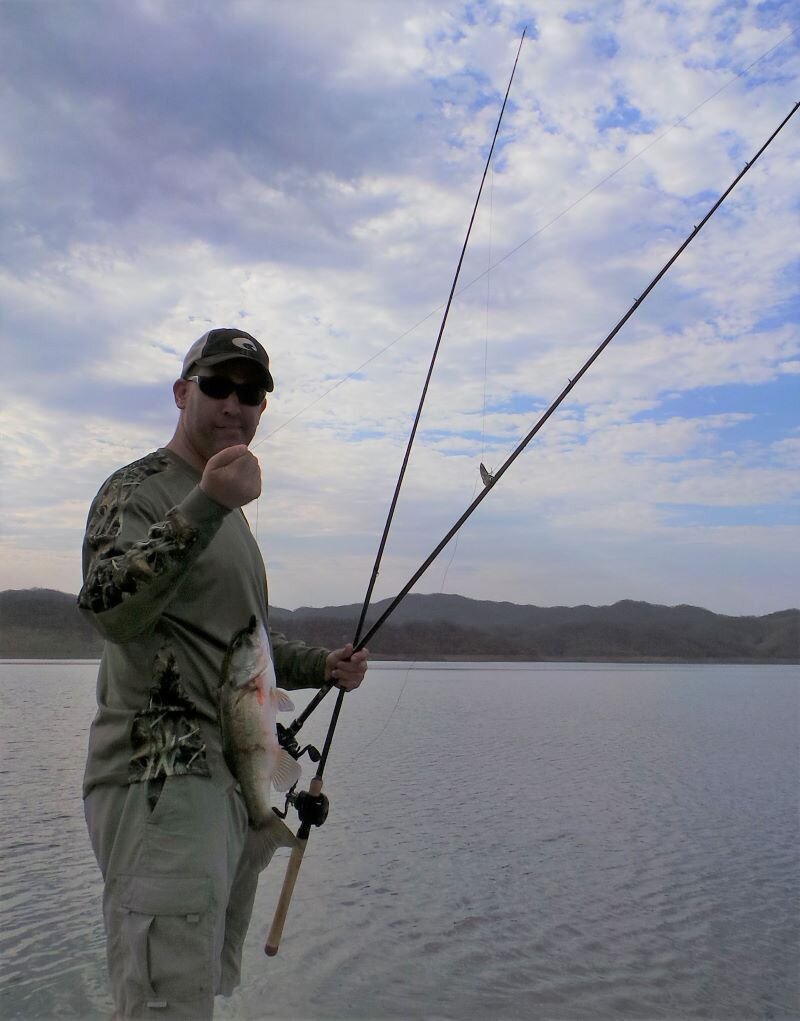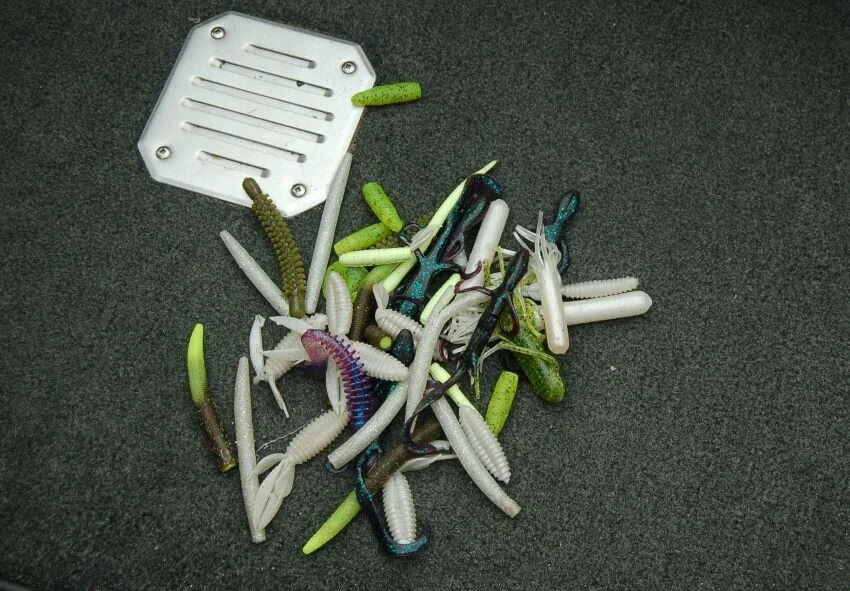How to (Strategically) Fish for UNPRESSURED Bass
There have been lots of articles over the years about how to fish for highly-pressured bass. I may have even written a few myself. It’s a useful topic because most of us fish crowded waters with excessive boat traffic and we’re hardly surprised to arrive at a key spot to find someone else on it – and there’s a pretty good chance they’re not the first person to wet a bait there that day.
On the flip side, I’ve never seen an article on how to fish for UNPRESSURED bass. I suppose that’s because it seems like something of a rhetorical question. If they’re unpressured, you can fish for them any way you’d like. However, just like visiting a new tackle shop, there’s a right way and a wrong way to get the job done should you stumble onto this unlikely scenario. For most of us, it’s the holy grail, a place where fish grow big and have never seen a lure. In reality, if we’re lucky enough to stumble onto “unpressured” fish it’ll never even be close to that good. Nevertheless, should you find a place where they’re biting like mad, be sure to make the most of it. It’s easy to enjoy the moment but not maximize it and there’s no reason you can’t do both.
I’ve been in a couple of scenarios that approached the ideal level of excellence. A few times I’ve been to Lake Winnipesaukee (New Hampshire) when you couldn’t swing a dead possum without it landing on an eager-to-bite bedding smallmouth. When you got tired of them, you could head out to the shoals and throw a big Zara Spook or one-ounce spinnerbait for arm-crushing strikes. Similarly, when Hanna and I went to Lake Picachos (Mexico) for the first time in May of 2014, before Anglers Inn had built their lodge on the lake’s banks, we found a similar situation. After scratching and clawing for a few bites over the first hour, our novice guide tied the boat to a tree and we proceeded to catch over 200 fish before we left. On a few occasions, we’d lose a bass and another would grab the lure before we could reel it in to check it. At one point I put my rod down so we could take a photo of the 7 pound 11 ounce fattie I’d just landed, when suddenly the guide began pointing and yelling. My lizard had been dangling over the side of the boat, another bass had jumped up and grabbed it, and my rod was being dragged out to the middle of the lake. Only his quick actions prevented us from losing the rod and reel combo. I’m glad we got them back, but it would have been worth it!
Here are four things to consider should you stumble onto a bass fishing Shangri La:
Try New Techniques, Colors and Retrieves
If fishing are biting regularly—or even indiscriminately—this is the perfect time to gain confidence in presentations that you’ve never used before, or that you’ve used relatively infrequently. Want to figure out how to fish a glide bait that you’ve never thrown? This is the time. Want to see if bass will hit a jerkbait fished at warp speed, or hit it better than one that’s paused? Then mess around with cadences. Yes, it’s fun to get bit on old standards, but you might as well turn this bounty into future productivity when the bite is tougher.
Use Up Old Lures
Do you have a couple of crates or cardboard boxes in the garage full of soft plastics that you know you’ll never use? Don’t go through the good stuff when the fish will bite anything short of a used cigarette butt. On our trips to New Hampshire during spawning season, when I know the bass are likely to be ultra-aggressive, I’ll take a few standard sizes/shapes/colors just in case the fish are a little picky, but most of the time they’re not. That’s when I pull out the “what-the-hell-was-I thinking-when-I-bought-these” selections. Rather than letting those baits languish on a shelf while using up my staples, I efficiently pare down the less valuable gear to make more room.
Test Your Tackle
Do you know if you can land a big fish on your medium-light spinning tackle? Will your drag seize up? Will your FG knot hold? This is the time to put your gear to the test. I’m not suggesting that you should go with 2-pound line for 10-pound largemouths (unless that’s your jam) because you’re likely to leave a lot of lip jewelry behind, but this is a great opportunity to stress test the gear that you’re not sure about. Then, when bites are scarce or you’re fishing a tournament and money’s on the line, you’ll have more confidence in how far you can push it.
Focus on the Bigger Fish
Everyone loves getting bites, and there’s nothing wrong with setting hooks on as many fish as you can—after all, there will be days when you’re on your knees wishing for just a few of them. At the same time, once you’ve jacked a few dozen 2-pounders, you might want to spend some time trying to pluck the biggest fish out of the lake or river. That could mean going to deeper water or using a bigger bait or a different color. Those big fish likely aren’t pressured, either, but they may respond to different stimuli. Not only will you kick yourself at the end of the day if you don’t at least try, but figuring out those little distinctions will make a difference on getting more and bigger bites at the opposite end of the experience spectrum, when times are tough.
We can’t guarantee that you’ll ever end up at a place where the fishing is easy, but we do recommend going places where a consistent bite is expected if you want to have a chance. Grosse Savanne is one such fishery, and Lake Picachos is still arguably the best numbers lake in Mexico. If you have some other ideas and want to invite us, by all means reach out!







